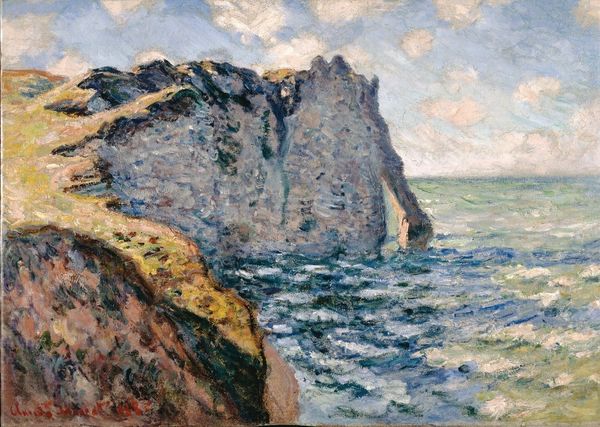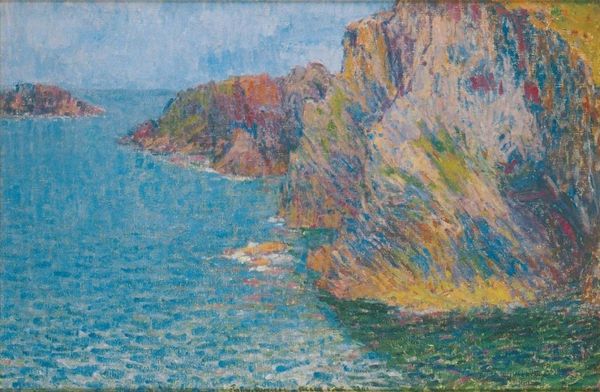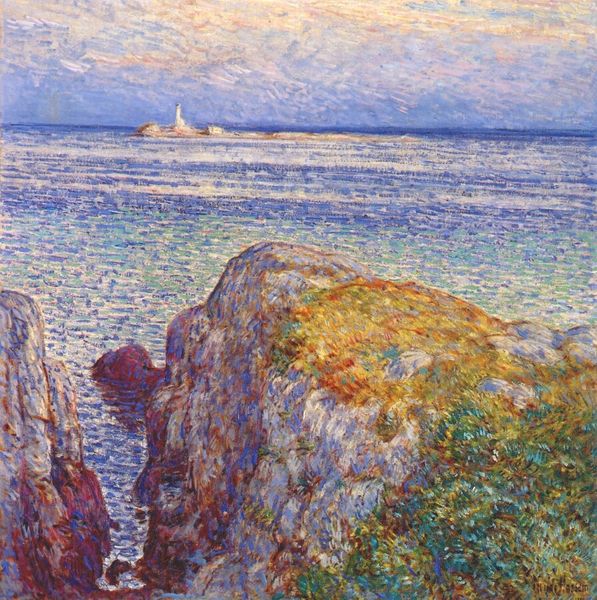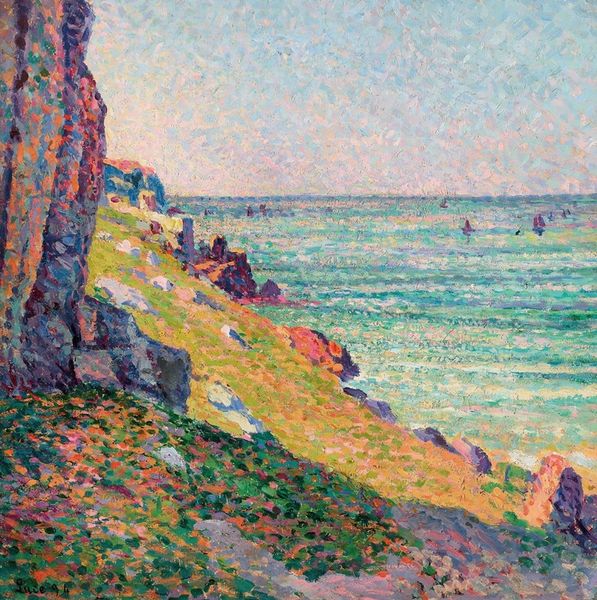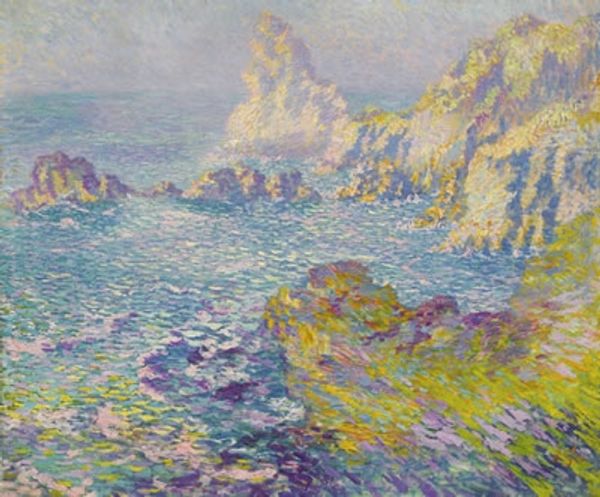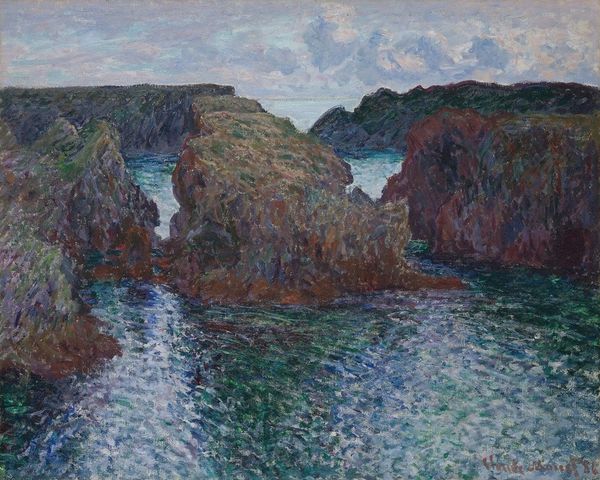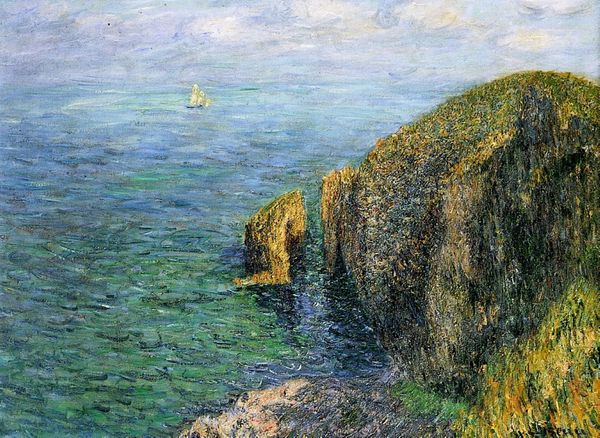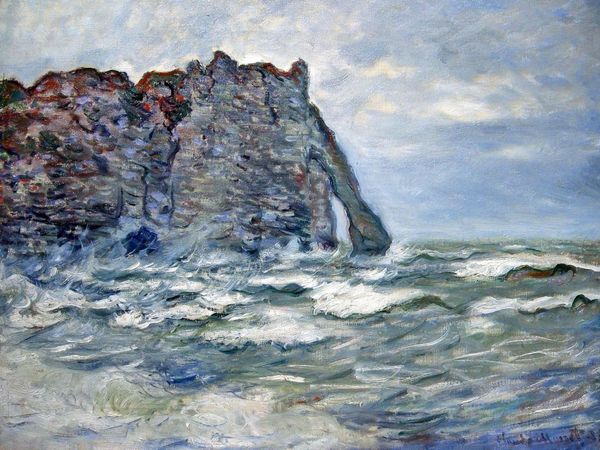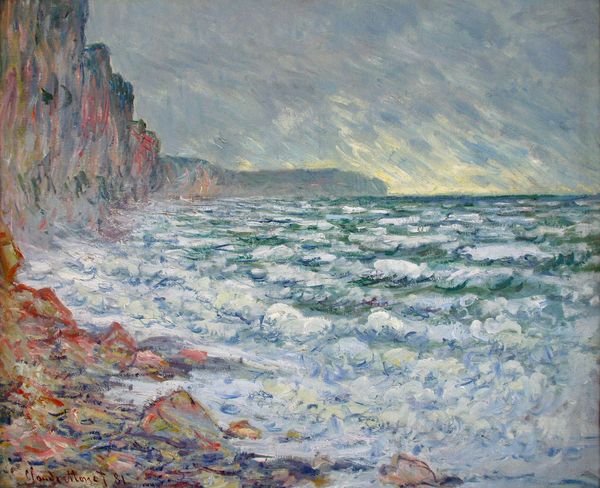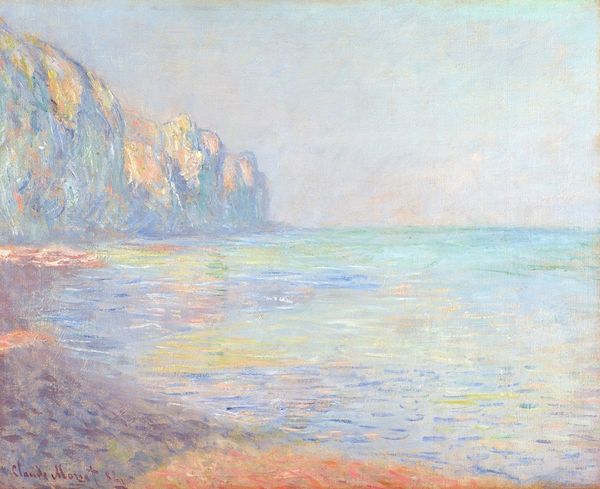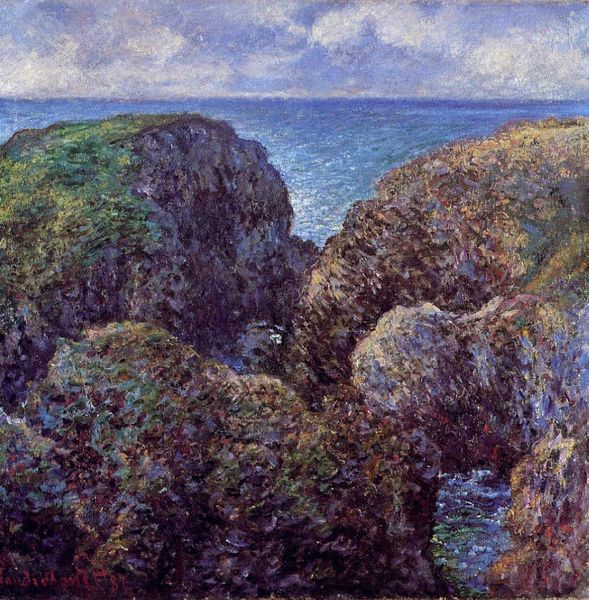
Copyright: Public domain
“Cliffs of Les Petites-Dalles” is a landscape painting by Claude Monet. It is defined by vibrant colors and dynamic brushstrokes. The artwork presents a striking cliff formation contrasted against the sea and sky, composed with careful attention to light and texture. Monet's use of broken color and visible brushwork challenges traditional academic painting, in favor of capturing the transient effects of light and atmosphere. The structure of the painting is particularly intriguing. See how the cliff dominates the composition, creating a visual weight that is counterbalanced by the open space of the sky and sea. The rough texture of the brushstrokes adds a tactile quality, while the interplay of colors suggests movement and change. The painting operates within the late 19th-century discourse of modernity, which reflects the era’s interest in science, perception, and the experience of the everyday. Monet’s formal innovations engage with broader philosophical ideas about the nature of reality and representation. As we stand here, consider how Monet's emphasis on sensory experience invites us to reconsider our own ways of seeing.
Comments
No comments
Be the first to comment and join the conversation on the ultimate creative platform.
